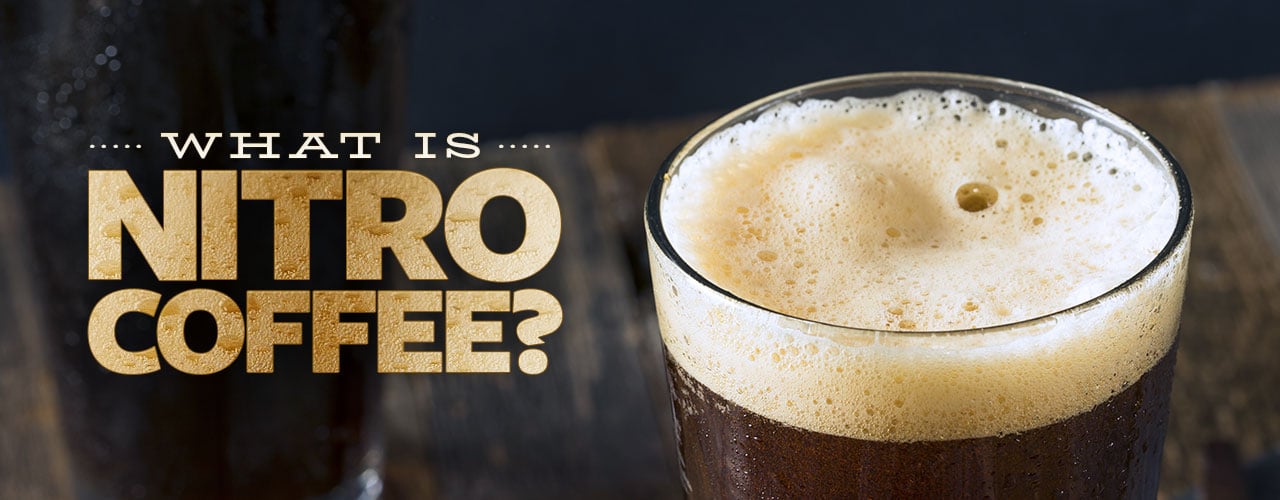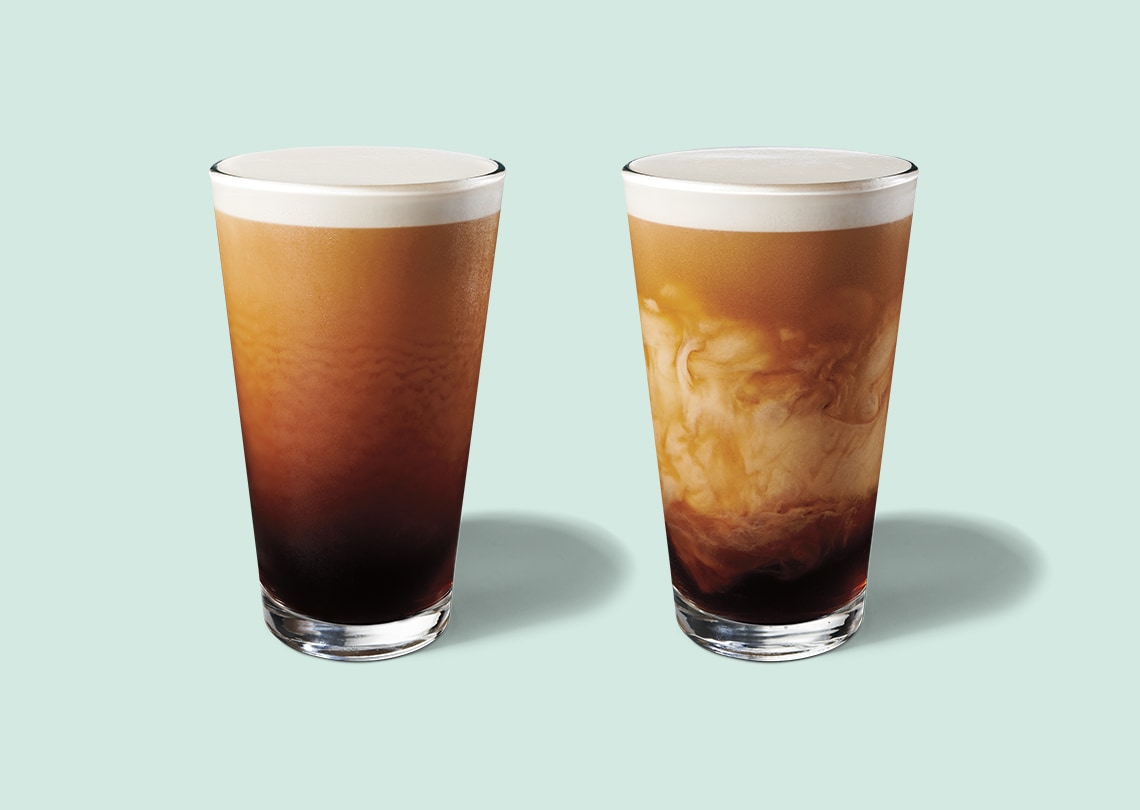As an Amazon Associate CoffeeXplore.com earns from qualifying purchases.
What’s Nitro Coffee? The Smooth Cold Brew Explained
Ever walked into a coffee shop and seen something that looks suspiciously like a pint of Guinness being poured, only to find out it’s… coffee? You’re not alone. Nitro coffee has surged from a niche curiosity to a menu staple, leaving many wondering what exactly this frothy, cascading beverage is all about. Is it just cold brew with bubbles? Does it pack an extra caffeine punch? And why does it look so mesmerizing?
Many coffee lovers find themselves puzzled by the unique texture and taste of nitro coffee compared to their usual cup. It can be confusing to understand how it’s made, why it tastes naturally sweet without sugar, and whether it’s really that different from regular cold brew or iced coffee. You might even wonder if that creamy head is some kind of dairy addition.
Nitro coffee is cold brew coffee infused under pressure with nitrogen gas, creating a uniquely smooth, rich texture, a dense, creamy head, and a naturally sweeter flavor profile compared to traditional coffee. Often served chilled directly from a tap without ice, its cascading microbubbles give it a distinctive visual appeal similar to stout beers.
As experienced coffee enthusiasts and researchers who’ve tracked beverage trends, we’ve delved deep into the science and craft behind nitro coffee. Stick around, and you’ll discover exactly how nitro coffee achieves its signature characteristics, how it stacks up against other coffee drinks, the potential health considerations, and the best way to enjoy it. We’ll demystify the nitrogen infusion process and explore why this unique brew has captivated coffee drinkers worldwide.
Key Facts:
* Nitrogen Infusion Creates Creaminess: Nitro coffee gets its signature velvety texture and thick, foamy head from being infused with nitrogen gas, which creates tiny, stable microbubbles.
* Cold Brew Base: The foundation of most nitro coffee is cold brew, coffee steeped in cold water for 12-24 hours, resulting in lower acidity and a smoother taste than hot-brewed coffee.
* Higher Caffeine Potential: Due to the concentrated nature of the cold brew base (higher coffee-to-water ratio), nitro coffee often contains more caffeine per serving than regular drip coffee, typically ranging from 200-300mg per 16oz.
* Naturally Sweeter Taste: The nitrogen infusion enhances the perceived sweetness and reduces bitterness, meaning many people enjoy nitro coffee without added sugar or milk.
* Growing Market Trend: Once a craft beverage, nitro-infused drinks are booming, with the global market projected to grow significantly, reaching an estimated $366 million by 2030, according to consumer product reports referenced by Breville.
What Exactly is Nitro Coffee?
Nitro coffee is essentially cold brew coffee that has been infused, or charged, with pure, food-grade nitrogen gas. This infusion process fundamentally transforms the coffee’s texture, taste, and appearance, setting it apart from other coffee beverages. It’s typically stored in kegs under pressure and served chilled from a tap, much like draft beer.
The result? A coffee drink renowned for its remarkably smooth, velvety mouthfeel, a dense, creamy head (similar to a stout beer like Guinness), and a naturally sweet flavor profile that often requires no added sugar or milk. While hot nitro coffee is technically possible, it’s rarely seen due to the complexities of preparing it in small batches; cold brew is much more suitable for kegging and nitrogenation in bulk, making nitro cold brew the standard.

Defining Nitro Coffee: Beyond Regular Cold Brew
While both start with cold brew, nitro coffee takes it a significant step further. Regular cold brew is simply coffee grounds steeped in cold water for an extended period (usually 12-24 hours). This process extracts compounds differently than hot brewing, resulting in lower acidity and bitterness.
Nitro coffee begins with this cold brew base but then undergoes nitrogenation. The coffee is put into a keg and infused with nitrogen gas under high pressure. When dispensed through a special tap (often featuring a restrictor plate), the dissolved nitrogen expands, creating millions of tiny, cascading bubbles and that signature creamy foam. It’s this nitrogen infusion that gives nitro its unique sensory characteristics – the texture, the visual cascade, and the enhanced sweetness – differentiating it sharply from standard cold brew.
The Rise of Nitro: From Niche to Mainstream
Nitro coffee wasn’t always the coffee shop staple it is today. Its origins trace back to around 2012-2013, with pioneers like Cuvee Coffee in Austin, Texas, and Stumptown Coffee Roasters in Portland, Oregon, experimenting with infusing cold brew with nitrogen. Inspired by nitrogenated beers, they sought to bring that creamy texture and enhanced flavor profile to coffee.
Initially a niche offering found only in specialty cafes, nitro coffee’s popularity steadily grew. The real mainstream breakthrough arguably came in 2016 when Starbucks introduced Nitro Cold Brew nationwide. This move significantly increased consumer awareness and demand. Since then, nitro coffee has become widely available, not just on tap in cafes but also in ready-to-drink (RTD) cans found in grocery stores, cementing its place in the modern coffee landscape.
How is Nitro Coffee Made?
Making nitro coffee involves a two-stage process: first creating the cold brew base, and then infusing it with nitrogen gas. The process typically starts by steeping coarse coffee grounds in cold or room-temperature water for 12 to 24 hours. This resulting cold brew concentrate is then transferred to a keg, chilled, and infused with nitrogen gas under pressure using a specialized tap system. Finally, it’s dispensed chilled, usually without ice, creating the signature cascade and creamy head.
Understanding these steps helps appreciate the craft behind this unique beverage. Let’s break it down.
Starting with the Right Base: The Cold Brew Foundation
Everything begins with high-quality cold brew coffee. This isn’t just regular coffee cooled down; it’s a distinct brewing method. Coarsely ground coffee beans are steeped in cold or ambient-temperature water for a prolonged period, typically anywhere from 12 to 24 hours.
Why cold brew? This slow, low-temperature extraction process yields a coffee concentrate that is naturally smoother and significantly less acidic and bitter than coffee brewed with hot water. This lower acidity provides the perfect smooth canvas for the nitrogen infusion to shine, contributing to nitro coffee’s easy-drinking character. The resulting concentrate is often quite strong and may be diluted slightly before nitrogenation, depending on the desired strength.

The Magic of Nitrogen Infusion: Creating the Creaminess
This is where the transformation happens. Once the cold brew is ready and chilled, it’s transferred into a keg, similar to those used for beer. The keg is then pressurized with pure nitrogen gas (N2). Unlike carbon dioxide (CO2) used in sodas and some beers, nitrogen consists of much smaller bubbles and is less soluble in liquids.
When the nitrogen-infused coffee is forced through a specialized faucet—often equipped with a restrictor plate—the dissolved nitrogen gas comes out of solution, forming countless tiny microbubbles. These microbubbles are key:
* Texture: They create the incredibly smooth, rich, and velvety mouthfeel that nitro coffee is famous for.
* Foam Head: They form a dense, long-lasting, creamy head on top of the coffee.
* Visual Cascade: They cause the mesmerizing downward “cascading” effect seen immediately after pouring, similar to a Guinness.
Equipment ranges from full-scale commercial kegerator systems found in cafes to smaller countertop units (like those from BROOD or uKeg) and even handheld whipped cream dispensers adapted with nitrogen cartridges for home use. Regardless of the system, the principle remains the same: infusing cold brew with nitrogen under pressure to create those signature characteristics.
What Makes Nitro Coffee Taste and Feel Different?
The unique sensory experience of nitro coffee stems directly from the nitrogen infusion process, impacting its texture, flavor, and appearance. Nitro coffee boasts a distinctively smooth, velvety texture and a rich, creamy mouthfeel due to the nitrogen microbubbles, creating a dense foam head. It tastes naturally sweeter and less acidic/bitter than regular coffee, often perceived as richer without needing added sugar or milk.
It’s more than just cold coffee; it’s a textural and flavor journey. Let’s dive into what makes it stand out.
Unpacking the Smooth, Velvety Texture
The most immediate and defining characteristic of nitro coffee is its texture. Forget watery or thin; think smooth, rich, and incredibly velvety. This luxurious mouthfeel comes directly from the millions of tiny nitrogen bubbles suspended in the liquid.
Unlike the larger, sharper bubbles of carbon dioxide (found in soda), nitrogen creates smaller, more stable bubbles that don’t dissipate quickly. This results in a consistency often described as creamy or silky, even without any dairy added. The dense, persistent foam head that forms on top further enhances this creamy sensation, contributing significantly to the overall drinking experience. It feels substantial and satisfying in the mouth.
Understanding the Flavor Profile: Sweetness Without Sugar
Beyond texture, nitrogen also subtly alters the flavor perception of the coffee. Many drinkers report that nitro coffee tastes naturally sweeter than its non-nitrogenated cold brew counterpart or regular hot/iced coffee.
There are a couple of reasons for this:
1. Reduced Acidity/Bitterness: The cold brewing process itself lowers the acidity and bitterness.
2. Nitrogen’s Influence: The creamy texture provided by nitrogen can trick our palate into perceiving more sweetness. The smooth mouthfeel masks some of the coffee’s inherent bitterness, allowing its natural subtle sweetness and nuanced flavor notes (like chocolate or fruit) to come forward.
This perceived sweetness is a major appeal, as it often means you can enjoy nitro coffee black, without needing to add sugar, sweeteners, or cream, potentially making it a lower-calorie option.
The Visual Appeal: Why Does it Look Like Draft Beer?
Nitro coffee is as much a feast for the eyes as it is for the palate. When poured fresh from the tap, it exhibits a captivating cascading effect. The tiny nitrogen bubbles surge downwards through the darker liquid before slowly rising to form the thick, creamy head.
This mesmerizing visual display is highly reminiscent of a freshly poured Guinness or other nitrogenated stout beers. It’s purely a result of the physics of nitrogen bubbles coming out of solution in the cold liquid. This visual drama adds to the overall experience, signaling the unique texture and taste to come before you even take the first sip.
Key Takeaway: The magic of nitro coffee lies in the nitrogen infusion. It transforms cold brew by creating an unparalleled smooth texture, enhancing perceived sweetness, reducing bitterness, and delivering a visually stunning cascading effect.
How Does Nitro Coffee Compare to Other Coffee Drinks?
Navigating the world of cold coffee can be confusing. How does nitro really stack up against its cousins? Nitro coffee stands apart from regular cold brew due to its nitrogen infusion, which adds a signature creamy texture and perceived sweetness. Compared to traditional iced coffee (hot brew cooled over ice), nitro is brewed cold, resulting in lower acidity, a smoother profile, and typically a higher caffeine content due to the concentrated brewing method.
Let’s break down the key differences between nitro coffee, regular cold brew, and standard iced coffee.
Nitro Coffee vs. Regular Cold Brew
These two are often confused because nitro starts as cold brew. However, the nitrogen infusion makes a world of difference.
- Texture: This is the biggest differentiator. Nitro coffee is distinctly creamy, smooth, and velvety with a thick foam head, thanks to nitrogen. Regular cold brew has a thinner, more traditional liquid coffee texture.
- Taste: Both are low in acidity compared to hot brew. However, nitro often tastes sweeter and less bitter due to the textural effects of nitrogen masking bitterness. Regular cold brew’s flavor is cleaner and simpler, reflecting the coffee bean profile more directly without the textural overlay.
- Appearance: Nitro has the signature cascading effect and dense head. Regular cold brew looks like standard iced coffee (dark liquid, perhaps with ice).
- Preparation: Nitro requires specialized equipment (kegs, taps, nitrogen tanks). Regular cold brew just needs time, coffee, water, and a filter.
Tip: Think of regular cold brew as the base ingredient and nitro coffee as the enhanced, texturally transformed final product.
Nitro Coffee vs. Iced Coffee
This comparison highlights differences in brewing method and serving style.
- Brewing Method: Nitro coffee uses a cold brew base (steeped cold for 12-24 hours). Traditional iced coffee is typically hot coffee (drip, pour-over, etc.) brewed double-strength and then cooled down rapidly, often by pouring over ice.
- Acidity & Bitterness: Due to cold brewing, nitro coffee is significantly less acidic and bitter. Hot-brewed iced coffee retains the higher acidity and potential bitterness characteristic of hot extraction methods.
- Texture & Body: Nitro is creamy, rich, and full-bodied. Iced coffee tends to be thinner and can sometimes taste watery as the ice melts, unless brewed specifically to compensate.
- Flavor: Nitro offers smooth, often sweeter notes. Iced coffee’s flavor reflects its hot brewing origin – potentially brighter, sharper, or more acidic.
Caffeine Content: Is Nitro Coffee Stronger?
Generally, yes. Nitro coffee typically contains more caffeine than regular drip coffee or standard iced coffee, often ranging from 200 to 300 milligrams per 16 ounces (though this varies). This isn’t because of the nitrogen itself, but because of the cold brew concentrate used as its base.
Cold brewing usually involves a higher ratio of coffee grounds to water compared to standard drip methods, resulting in a more concentrated coffee extract. While some dilution might occur before serving, the final nitro product often retains a higher caffeine level per ounce.
However, it’s not always stronger than regular cold brew, as they share the same base. The final caffeine content depends heavily on the specific recipe, coffee-to-water ratio, bean type, and serving size used by the coffee shop or brand. Always check nutritional information if caffeine intake is a concern.
| Feature | Nitro Coffee | Regular Cold Brew | Traditional Iced Coffee |
|---|---|---|---|
| Base | Cold Brew | Cold Brew | Hot Brew |
| Infusion | Nitrogen Gas | None | None |
| Texture | Creamy, Velvety, Thick Foam | Thin, Liquid | Thin, Potentially Watery |
| Acidity | Low | Low | Higher |
| Taste | Smooth, Naturally Sweet | Smooth, Clean | Brighter, Potentially Bitter |
| Caffeine | Typically High (Concentrated) | Typically High (Concentrated) | Variable (Often Moderate) |
| Appearance | Cascading Effect, Dense Head | Dark Liquid | Dark Liquid (Often with Ice) |
| Preparation | Cold Steep + Nitrogen Infusion | Cold Steep Only | Hot Brew + Cooling (Ice) |
Are There Any Health Considerations with Nitro Coffee?
While generally enjoyed for its taste and texture, it’s natural to wonder about the health aspects of nitro coffee. Nitro coffee is generally considered safe, utilizing harmless nitrogen gas. Key benefits include its lower acidity, which can be gentler on sensitive stomachs, and its natural sweetness, potentially reducing the need for added sugar and calories. However, its high caffeine content should be considered, and it might contain slightly fewer antioxidants than hot-brewed coffee.
Let’s look at the potential upsides and points to keep in mind.
Potential Benefits: Lower Acidity and Fewer Additives
One of the most cited benefits relates back to its cold brew origins:
* Lower Acidity: The cold brewing process produces coffee that is significantly less acidic than traditionally hot-brewed coffee. This can make nitro coffee a gentler option for individuals who experience heartburn, acid reflux, or stomach sensitivity with regular coffee.
* Fewer Additives: Because nitro coffee often tastes naturally sweet and creamy on its own, many people find they don’t need to add sugar, syrups, milk, or cream. Enjoying it black means fewer calories, less sugar, and less fat compared to sweetened or milky coffee beverages. This can make it a more appealing choice for those watching their calorie or sugar intake.
Caffeine Levels and Antioxidants
While the taste might be smooth, the caffeine kick can be significant.
* High Caffeine Content: As discussed earlier, nitro coffee often packs a higher caffeine punch than regular coffee due to its concentrated cold brew base. While caffeine can offer benefits like increased alertness, excessive intake can lead to jitters, anxiety, sleep disturbances, or increased heart rate in sensitive individuals. It’s wise to be mindful of your total caffeine consumption throughout the day.
* Antioxidants: Coffee is known for its antioxidant content, particularly chlorogenic acids. Some research suggests that the cold brewing process might extract slightly fewer of these beneficial compounds compared to hot brewing methods. While cold brew (and thus nitro) still contains antioxidants, hot coffee might have a slight edge in this specific regard.
Is the Nitrogen Gas Safe to Consume?
This is a common question, and the answer is a definitive yes. The nitrogen gas (N2) used in nitro coffee is completely safe for consumption.
Here’s why:
* Inert Gas: Nitrogen is an inert gas, meaning it doesn’t readily react with other substances, including those in your body.
* Abundant in Air: It’s the most abundant gas in the Earth’s atmosphere, making up about 78% of the air we breathe every moment.
* Food Industry Standard: Nitrogen has been safely used in the food and beverage industry for decades, notably in packaging to preserve freshness and in nitrogenated beers (like stouts and porters) to achieve that characteristic creamy texture.
Consuming nitrogen-infused beverages poses no known health risks. The gas primarily affects the drink’s texture and mouthfeel before quickly dissipating.
Key Takeaway: Nitro coffee offers potential benefits like lower acidity and reduced need for sugary additives. However, be mindful of its potentially high caffeine content, and know that the nitrogen gas itself is perfectly safe.
How Should You Drink Nitro Coffee?
To fully appreciate the unique qualities of nitro coffee, there’s a recommended way to enjoy it. For the optimal experience, drink nitro coffee chilled, served neat (without ice) directly from the glass. Avoid using a straw, as this bypasses the creamy foam head which is integral to the texture. It’s best enjoyed fresh from the tap to experience the full cascade and optimal nitrogenation.
Think of it like savoring a fine craft beer – presentation and consumption method matter.
- Serve Chilled, No Ice: Nitro coffee is best served cold, straight from the refrigerated keg. Adding ice is generally discouraged because it dilutes the coffee, altering the carefully crafted flavor profile and potentially disrupting the smooth texture as it melts. The nitrogenation itself helps keep it feeling refreshing.
- Ditch the Straw: A key part of the nitro experience is the dense, creamy foam head. Drinking directly from the glass allows you to experience the contrast between the rich foam and the smooth liquid beneath. Using a straw bypasses the foam entirely, diminishing the intended textural sensation.
- Glassware Matters (Sometimes): While not essential, serving nitro coffee in a clear glass (like a pint glass or a tulip glass) allows you to fully appreciate the mesmerizing cascading effect as it settles.
- Try it Black First: Before reaching for sugar or cream, give nitro coffee a try on its own. Its natural sweetness and creamy texture mean many people prefer it black, finding additives unnecessary. Experience its inherent qualities first.
- Drink it Fresh: Nitro coffee is at its best right after being poured, when the nitrogen bubbles are most active, the cascade is visible, and the head is perfectly formed. While canned nitro coffee offers convenience, the on-tap experience is often considered superior.
Tip: Treat your first nitro coffee like a tasting experience. Observe the cascade, notice the texture of the foam, and savor the smooth, naturally sweet flavor without additions.
FAQs About Nitro Coffee
Still have questions swirling around about this bubbly brew? Here are answers to some frequently asked questions about nitro coffee.
What is the main point of nitro coffee?
The main point is its unique texture and enhanced flavor perception. Nitrogen infusion creates an exceptionally smooth, creamy, velvety mouthfeel and a dense foam head, while also making the coffee taste naturally sweeter and less bitter compared to regular cold brew or iced coffee.
Is nitro coffee stronger in caffeine than regular coffee?
Generally, yes. Nitro coffee usually has more caffeine than standard drip coffee because it’s made from cold brew concentrate, which uses a higher coffee-to-water ratio. Caffeine content can vary but often falls in the 200-300mg range per 16oz serving.
Is nitro cold brew just black coffee with gas?
It’s more nuanced than that. It starts with cold brew coffee (not just any black coffee), which has a distinct low-acidity profile. Then, it’s infused specifically with nitrogen gas (not CO2), which creates microbubbles responsible for the signature creamy texture and cascading effect.
Does all nitro coffee contain caffeine?
Typically, yes. Since the base is almost always caffeinated cold brew coffee, standard nitro coffee contains caffeine, often in higher amounts. Decaffeinated nitro coffee is rare but technically possible if made with decaf cold brew.
How is nitro coffee different from regular cold brew?
The key difference is the nitrogen infusion. Nitro coffee is nitrogenated, giving it a creamy texture, foam head, and sweeter taste. Regular cold brew is non-nitrogenated, resulting in a thinner texture and simpler flavor profile.
Is nitro coffee bad for your health?
No, nitro coffee itself is not inherently bad for health. The nitrogen gas is safe. Potential benefits include lower acidity and fewer added calories if consumed black. The main consideration is its potentially high caffeine content, which should be consumed in moderation depending on individual tolerance.
How much caffeine is typically in a Starbucks Nitro Cold Brew?
A Grande (16 oz) Starbucks Nitro Cold Brew typically contains around 280 milligrams of caffeine. This is significantly higher than a regular Grande Starbucks Cold Brew (205 mg) or a Grande Iced Coffee (165 mg).
Can I make nitro coffee at home?
Yes, it’s possible to make nitro coffee at home, although it requires specific equipment. Options range from small countertop nitro keg systems to modified whipped cream dispensers using nitrogen (N2) cartridges (not N2O used for whipped cream).
Why is nitro coffee served without ice?
It’s served without ice primarily to preserve its unique texture and prevent dilution. Ice melts and waters down the coffee, compromising the creamy mouthfeel created by the nitrogen bubbles and altering the intended flavor balance.
Is the nitrogen used in nitro coffee safe to drink?
Absolutely. The food-grade nitrogen gas used is inert, tasteless, odorless, and makes up about 78% of the air we breathe. It has been used safely in beverages (like stout beers) and food packaging for many years.
Summary: The Smooth Cold Brew Explained
Nitro coffee represents a fascinating evolution in the coffee world, transforming the familiar cold brew into a uniquely textured and flavorful beverage. By infusing cold brew coffee with nitrogen gas, baristas and brands create a drink celebrated for its velvety smoothness, rich creamy head, visually appealing cascade, and naturally sweet taste profile.
Here are the key takeaways:
- Foundation: It starts with low-acidity cold brew coffee.
- Transformation: Nitrogen gas infusion is the magic ingredient, creating microbubbles.
- Sensory Experience: Results in a creamy, velvety texture, dense foam, cascading visual, and enhanced sweetness/reduced bitterness.
- Comparison: Distinctly different from regular cold brew (texture) and iced coffee (brewing method, acidity, texture).
- Caffeine: Typically higher in caffeine due to the concentrated cold brew base.
- Consumption: Best enjoyed chilled, without ice, and without a straw to savor the texture and foam.
- Safety: The nitrogen gas used is completely safe.
Nitro coffee offers a delightful alternative for those seeking a smoother, naturally sweeter coffee experience without harsh acidity. It bridges the gap between craft coffee and craft beer aesthetics, providing a sophisticated yet approachable drink.
Have you tried nitro coffee? What was your first impression? Share your thoughts or ask any more questions in the comments below – let’s talk coffee! Feel free to share this post if you found it helpful.

